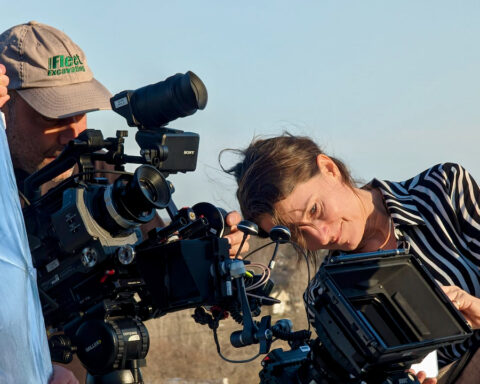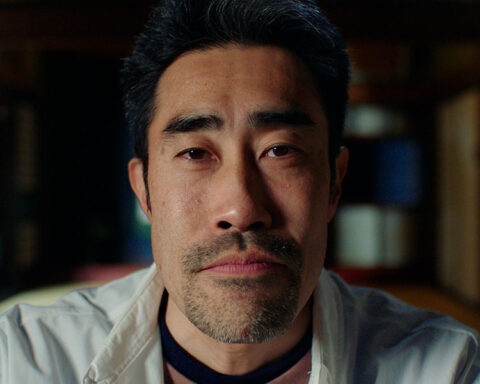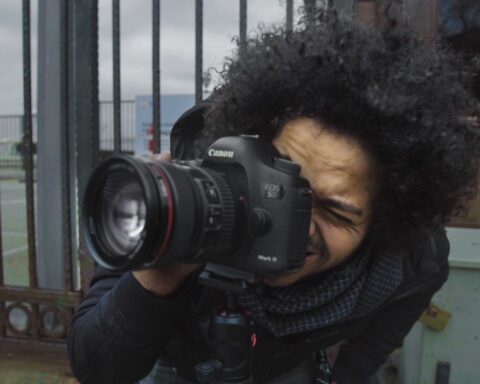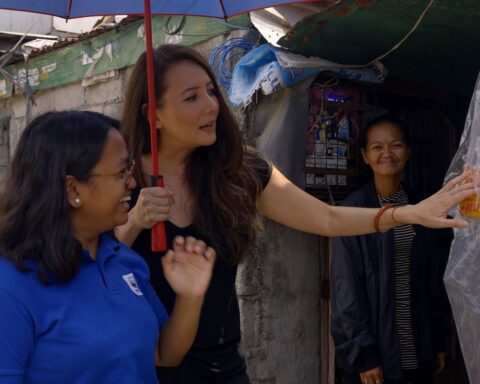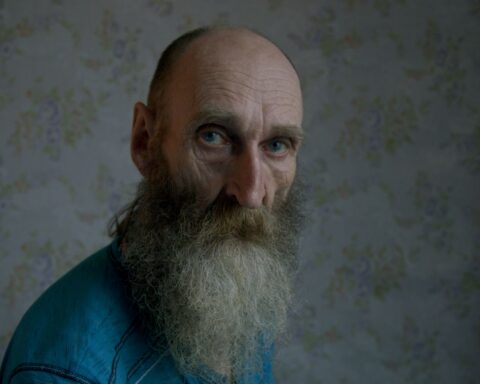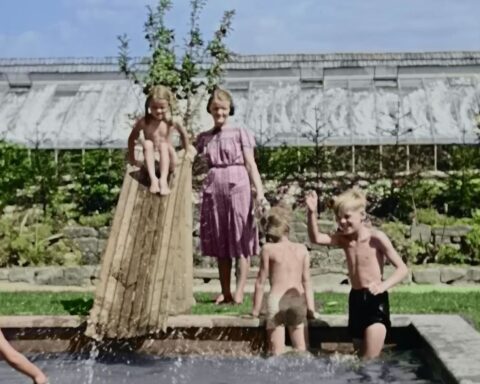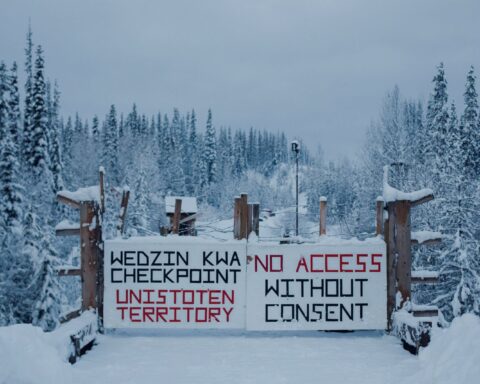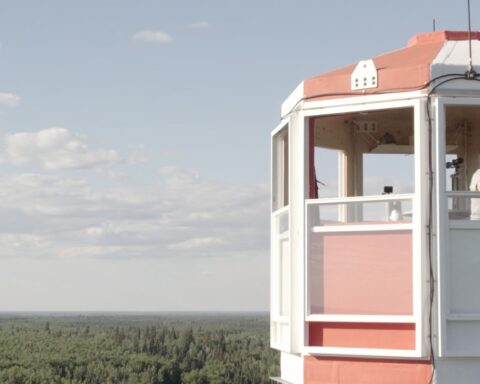Having recently returned from a single-person documentary shoot in Indonesia, one of the first questions other filmmakers ask me is, “Have you seen Position Among the Stars?”, the amazing film by Leonard Retel Helmrich.
Comparing is a natural phenomenon. I’m guilty of it, too. The first thing people often do when presented in conversation with information about a film they haven’t seen yet is look to films they have seen, as a point of reference. They wonder, “If it’s been done already, what could your film have to offer?”
I would have likely seen Position at Hot Docs this year but was instead shooting in Bali and Java. Dear Bini, the working title of my film, is about my participation in the anniversary reunion of a cultural-exchange trip my brother Mark went on in 1977, the year he died. Being presented with the opportunity to represent him was something I accepted without hesitation. The trip came together rapidly and before I knew it I was filming at a modest tropical restaurant with a group of people I’d only met once as a nine-year-old. Thirty-five years ago, they had spent six months in each other’s pockets, with my brother, traversing Canada and remote parts of Indonesia—and now they were back. With me, and my camera.
Watching Position Among the Stars upon my return to Toronto filled me with admiration for Helmrich’s cinematography skills but also caused me to reflect on some lingering ethical questions encountered while shooting. The film caps an award-winning trilogy, which Helmrich started 12 years ago with Eye of the Day and continued with Shape of the Moon. Filmed modestly but utilizing innovative camera techniques and methods, including the director-cinematographer’s single-shot cinema approach, Position instantly intrigued me. Helmrich’s extraordinary sense of framing and composition is masterful and sometimes left me thinking, ‘How dare he be so good?’ When I saw the shot of a subject in a field captured upside-down through a water droplet hanging from a leaf I knew this film was special.
Single-shot cinema is an approach developedand taught by Helmrich. He describes it as “a way of filming that enables you to shoot a scene in one single shot using just one camera moving flexibly in order to have all the different camera angles that expresses your personal feeling and perception of that moment.” Any film made with only this approach might feel strange to the eye, so Helmrich’s method is used judiciously throughout the film.
One scene in Position opens above the metal awning of a building and swoops down to reveal the main subjects. Single-shot cinema is further elaborated as this: “In practice you will have to move the camera steady and flexible but constantly moving from one angle to the other. Using camera movements fast and slow, high and low, close by and far away all in one single shot within a scene.”
As a viewer, these single-shot scenes are amazing eye candy and they work, but in some ways they also set up a contract with the viewer. It seems as if the filmmaker is saying, “This is reality. Because I’m not cutting the shot, what I am showing you is the result of some amazing synchronicity that occurred naturally, without interference on my part.” As someone who has worked in highly technical areas of drama and documentary production for over 23 years, I’m keenly sensitive to this kind of film grammar.
Whether or not Helmrich was setting up cues with his subjects or attempting multiple takes on these shots is less significant than the question raised by the context created by his philosophy: how do these scenes cut with others, where the single-shot approach is not used? Especially ones like the young boy running through the streets with a pilfered shirt, filmed from in front (subject entering frame, nudge-nudge wink-wink), behind and from a high angle at least two stories above street level? Never mind the fact that in the shots done from in front of the travelling subject, the camera is leading…
OK, OK—I’m not writing this to jealously pick apart Position, although I am envious, in a good way. The accomplishment of the film is supported by the calibre of awards it’s received (VPRO IDFA Award for Best Feature-Length Documentary and IDFA Award for Best Dutch Documentary). The reason I’m raising these questions is because this is where the ethical challenge begins in my own project.
Although I haven’t formalized my filmmaking philosophy with a published manifesto (yet), there is a set of unwritten rules I tend to observe. I generally don’t ask subjects to redo entrances and exits so I can “get the coverage.” And I don’t stage meetings in front hallways that begin by showing the anticipation of both subjects who are about to meet. When audiences see scenes like these, the more media-savvy among them recognize their insincerity and the rest simply feel it as a chill. I prefer to keep it real and deal with the consequences in the edit.
Here’s where I began to feel uncomfortable in Bali. My accommodation was generously supplied by the Bali Hyatt in Sanur. I’m a backpacker by tradition and this was my first five-star experience. Now, it didn’t take long to get over that dilemma! The hotel is set well back from the road and includes a massive garden, which I gravitated to, that includes a Hindu temple.
I had brought Mark’s journal with me. It detailed his trip to Indonesia as well as the last six months of his life, after returning home. His descent into despair and the ultimate conviction that life held no future possibility for him is documented in the book he addressed as Dear Bini. The garden temple in Sanur is the first place in Indonesia I filmed myself re-reading the journal. I felt comforted and connected there. Aware that cutaways would be useful, I also filmed details of the temple. Fair game, in my book of unwritten rules: the shots were taken on the same day and were within the same context of time and place.
That night I returned to the temple to film some motion-control time-lapse shots of the stars. I wanted to establish the place as a mystical spot. Knowing that the majority of the footage in this project would reflect the limitations of a one-person crew, it was important for me as a cinematographer to aspire to get some magnificent shots. I wanted to create something stunning, to bring something extra, visually, to this film: all to honour the purpose of this pilgrimage in my brother’s memory. (I had purchased the motion-control equipment immediately before my departure from Canada specifically for this purpose.)
After successfully nailing the night shot, the sun rose; I got my third wind and decided to keep shooting. The caramel sunrise backlit the structure and was irresistible. As I was about to pack everything up, some magic happened: a hotel employee approached with a gas-powered bug smoker. In my days on drama sets, this type of visual treatment was common, but to receive such luck on a documentary was an incredible blessing. The smoke completely filled the shot, creating stunning streaks as the sun blasted through a canopy of large backlit trees and wafted into the temple. I reshot everything in this light, brimming with gratitude at my good fortune.
Being both subject and filmmaker washighly challenging from a logistical standpoint. Add three card-based cameras to the mix and a 24-day shooting schedule that included consecutive day/night elements and you might wonder, ‘Why such madness’? But this was the opportunity of a lifetime and I was poised to suck the most from every moment. Here’s what started bothering me. The bulk of the shoot was still in front of me—but the whole time I pondered how to use the incredible smoke/temple footage. It sure was stunning, but as of yet was a non-sequitur. How could I make it real?
Over the next two weeks I filmed the formal part of the reunion and was then invited to a less-travelled part of northern Bali by one of the participants, a Brahmin. From home I had researched specific temples in that region where I wanted to utilize my new motion-control gear. My Brahmin host, Dayu, graciously introduced me to the everyday use of her prayer rituals and, quite quickly, it felt natural to utilize them for myself. Dayu hosted me in her home and arranged all travel and permissions for me to shoot at spectacular temple complexes.
By the time I returned to Sanur two weeks later, I had adopted the Hindu prayer rituals taught to me by Dayu. My time in Indonesia was drawing to a close. I felt that I had flown too close to the sun—and ended up losing a full day due to exhaustion and subsequent illness. It was my first day off since arriving, but I felt no remorse. Turn down the chance to shoot for two nights with unrestricted access at a remote 14th-century Balinese temple compound? Forget it, I thought at the time, I’ll sleep on the plane home.
Fortunately, I recovered quickly and found myself with one final day in Sanur. I returned to the Hyatt temple, now considered to be my spiritual home base, and found an inspired answer to my dilemma: I would shoot myself praying at the temple during sunrise and the mystical fog shots could cut in as supporting footage. With relief, I realized it would work from a cinematic standpoint.
And that’s when I began to have doubts about the sincerity of it all. The rest of the project had been shot with a bare-bones approach. This visually beautiful footage would stand out for sure. Never mind the fact that the footage had been shot weeks apart in time. I’d never done this before: my own unwritten rules were that all footage shot actually happened at the same time as the principal action.
With Dear Bini, anyone who sees the film and knows anything about the circumstances of production will know that I shot it all myself. There is no way that scene and the supporting footage could possibly have been shot at the same time. By extension, would this question arise while they were watching it—and if so, would it take them out of the moment? Perhaps.
Maybe I’m going too far. Maybe other people don’t ask questions like these. Then again, maybe they do. For me it’s about integrity—and that unspoken contract with the audience where filmmakers promise to “tell the truth” and not to compromise reality too much for the sake of story.
That’s why I admire—but am troubled by—the masterful treatment Helmrich used on Position of the Stars, as confirmed by audiences and awards panels. At the end of the film there’s a very moving scene where two elders, while reflecting on their shared youth, see a shooting star. There’s also a shot of the shooting star itself. Of course, the skeptic in me has to wonder how this scene was achieved. But truth be told, I think I’d rather not know.




